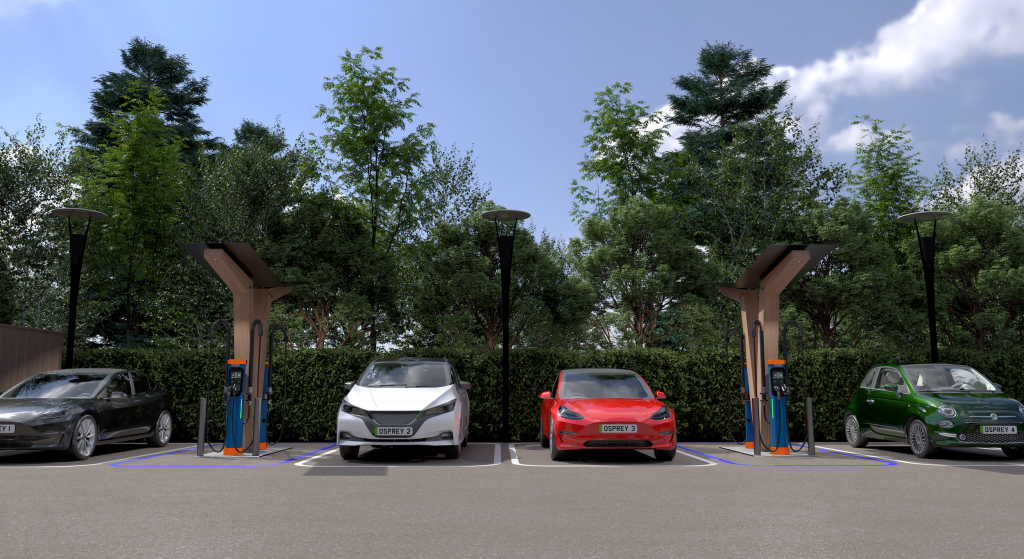Osprey Charging has announced the installation of over 150 high-powered electric vehicle charging hubs across the UK by 2025.
A total of 1,500 150-175KW rapid chargers will be installed across the sites, which will be located on strategic A-roads and adjacent to motorways, to encourage motorists to switch to electric cars ahead of the 2030 ban on new petrol and diesel cars.
The £75 million rollout will see game-changing new charger optimisation technology deployed publicly for the first time in the UK. Kempower charging technology enables more locations than ever to host multiple rapid chargers on a single site without compromising on charging power or requiring prohibitively expensive grid connections. The technology has the potential to revolutionise EV charging deployment in the UK by intelligently load balancing to maximise the amount of charge that each vehicle receives.
Osprey Charging has the ambition to make charging anxiety a thing of the past, according to Ian Johnston, CEO of Osprey Charging.
“Through this rollout we will make charging anxiety a thing of the past. High-powered, multi-charger hubs will herald a new era of public EV charging – enabling mass EV adoption and a clean transport revolution,” he said. “Our rollout of hubs across the country’s major transport routes will ensure drivers are supported with convenient, reliable, on-the-go charging, delivering the best possible consumer experience for UK motorists.”
Construction is already underway at four sites and Osprey’s first hub will open next month in Wolverhampton, adjacent to the A463 near the M6.
Each rapid charger is capable of adding 100 miles of range in as little as 10 minutes and each hub will be located near food and drink amenities, allowing drivers to make use of the facilities while they charge their car.
All Osprey chargers are compatible with every rapid charging EV on the market today and do not require a membership or subscription to initiate charging – drivers can simply tap their contactless bank card or smart phone.
Kempower chargers work together to optimise charging across multiple vehicles when more than one EV is plugged in at the same charging hub. They allow power to be distributed based on demand. The load-balancing technology also means grid connections can be optimised, allowing multiple high-power chargers to be installed per site and offering higher charging speeds without the need for more grid power.
The physical footprint of each charger is also reduced by 74%, allowing space for more chargers, improved accessibility and reducing their visual impact to support planning permission, according to Graeme Cooper, Head of Future Markets at National Grid.
“The power demand for charging will be significant, so it’s crucial that we use the cleanest and cheapest power in our cars and to make the most of each grid connection,” he said. “By optimising power management at charging facilities, we can ensure a smooth transition away from petrol and diesel whilst maintaining a stable and effective electricity grid.”
